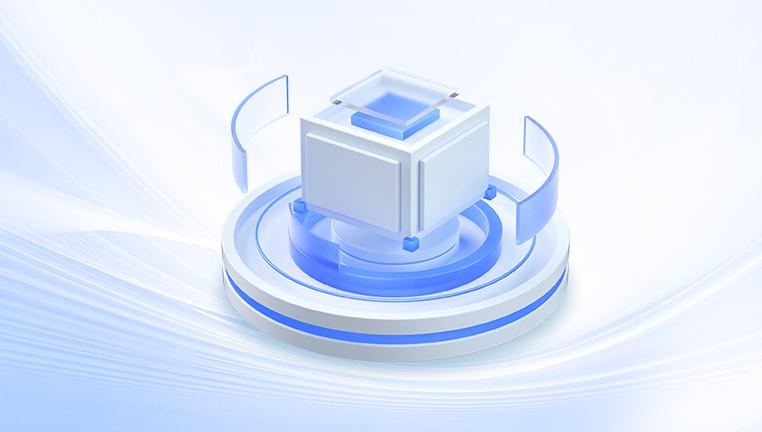Formatting a storage device is a common procedure used to prepare drives for use, remove data, or repair file system errors. However, a full format often raises concerns among users because it appears to erase all data, leaving the device blank and inaccessible. The critical question is: Does a full format make data unrecoverable?
1. Full Formatting
1.1 What Is Full Format?
In Windows and other operating systems, formatting prepares a drive by establishing a file system, such as NTFS, FAT32. or exFAT. A full format differs from a quick format in several ways:
Quick Format: Deletes the file system table but does not overwrite the data. Files remain physically present until overwritten.
Full Format: Deletes the file system and overwrites each sector of the drive with zeros (on modern systems), which makes data recovery more challenging. Full formatting also includes scanning for bad sectors, which helps maintain the integrity of the drive.

1.2 What Happens to the Data
During a full format:
The file system index is removed.
Each sector is overwritten with zeros or a default pattern.
The operating system marks the drive as empty and ready for new data.
This means that the original files are no longer directly accessible. The likelihood of recovery depends on whether the data sectors were fully overwritten and the type of storage device used.
2. Factors Affecting Data Recovery
Several factors determine whether data can be recovered after a full format:
Storage Medium: HDDs, SSDs, USB drives, and memory cards behave differently.
Operating System Implementation: Some full formats overwrite sectors immediately; others may mark them as empty without immediate overwriting.
TRIM on SSDs: Solid-state drives actively erase blocks marked as free, reducing recovery chances.
Time and Usage: Any data written to the drive after formatting can overwrite recoverable files.
Interruptions During Formatting: If the format was interrupted, partial data may still be recoverable.
3. Storage Device Considerations
3.1 Hard Disk Drives (HDDs)
HDDs store data magnetically. Full formatting overwrites sectors, but interrupted processes may leave fragments intact. Specialized recovery software can sometimes reconstruct files.
3.2 Solid-State Drives (SSDs)
SSDs complicate recovery due to TRIM commands, which clear blocks immediately after formatting or deletion. Once TRIM is executed, recovery becomes nearly impossible.
3.3 USB Flash Drives and Memory Cards
Quick formats on USB drives and SD cards are typically recoverable. Full formats that overwrite sectors reduce chances of recovery, but some specialized tools can sometimes salvage files, particularly if the formatting was partial or interrupted.
4. Recovery Methods
4.1 Using Recovery Software
Drecov Data Recovery
Accidental deletion, formatting, or corruption of files can happen to anyone, and losing important documents, photos, videos, or audio can feel catastrophic. Drecov Data Recovery offers a powerful, user-friendly solution to restore lost data from a wide range of storage devices, including hard drives, SSDs, USB flash drives, and memory cards.
The software uses advanced scanning algorithms to locate lost or deleted files and recover them in their original formats. Whether you accidentally formatted a USB stick, reset an SD card in your camera, or deleted critical documents, Drecov Data Recovery can help retrieve them quickly and efficiently. It supports multiple file types, including images, videos, audio files, documents, and archives, making it suitable for both personal and professional use.
Using Drecov Data Recovery is simple and intuitive:
Connect the affected storage device to your computer.
Launch Drecov Data Recovery and select the target drive.
Perform a quick or deep scan to detect lost files.
Preview recoverable files before restoring them.
Save the recovered files to a secure location separate from the original drive.
One of Drecov Data Recovery’s key advantages is its ability to restore files in their original format, ensuring usability and preserving metadata. It also works on formatted drives, deleted partitions, and even corrupted media, giving users confidence that their valuable data is never truly lost.
4.2 Steps for Recovery
Stop using the formatted drive to prevent overwriting.
Install recovery software on a different drive.
Connect the formatted drive directly to the computer.
Run a deep scan to locate all recoverable files.
Preview files before restoring them.
Recover files to a separate storage device.
5. Professional Data Recovery
If recovery software fails or the drive has physical damage, professional recovery services may help:
Cleanroom recovery for physically damaged drives.
Sector-by-sector extraction and file reconstruction.
Advanced techniques for overwritten or corrupted sectors.
Professional recovery can be costly, ranging from $300 to $2.000+, depending on drive size and complexity.
6. Case Studies
HDD Full Format: A 1TB hard drive fully formatted on Windows was partially recovered using deep scanning in Drecov Data Recovery, salvaging 60–70% of files.
SSD Full Format with TRIM: Files were almost entirely unrecoverable.
Interrupted Full Format on SD Card: Recovery software retrieved most photos and videos, demonstrating that incomplete formats allow some data recovery.
7. Challenges and Limitations
Overwritten Sectors: Fully overwritten files cannot be recovered.
TRIM Functionality: SSDs may permanently erase data blocks.
Drive Corruption: Bad sectors can prevent successful recovery.
File Fragmentation: Fragmented files may be partially recovered, requiring reconstruction.
8. Best Practices for Recovery
Stop using the drive immediately to avoid overwriting.
Use trusted recovery software installed on a separate drive.
Perform deep scans for maximum recovery potential.
Recover files to a different device to prevent data loss.
Back up important data to prevent future accidents.
9. Preventing Data Loss
Always back up important files to multiple locations.
Use write protection for critical external drives.
Verify device compatibility before formatting.
Avoid interruptions during formatting or data operations.
Consider cloud storage or automated backup solutions.
10. Frequently Asked Questions
Q1: Can data be recovered after a full format?
Sometimes. Recovery chances are higher if the format was interrupted, the drive is an HDD, or the overwrite process was incomplete. SSDs with TRIM are much harder to recover.
Q2: Can professional services recover fully overwritten drives?
Rarely. Overwritten data is generally unrecoverable, but experts may salvage fragments in some cases.
Q3: Is it safe to use free recovery software?
Free tools can recover basic files, but paid solutions like Drecov Data Recovery often offer better success rates for complex recoveries.
Q4: Does a full format make SSD data unrecoverable?
Usually, due to TRIM operations clearing data blocks.
A full format significantly reduces the likelihood of data recovery, especially on SSDs due to TRIM. However, in certain situations—such as interrupted formats, HDDs, or partial overwrites data recovery is still possible. The key is to act immediately, avoid using the drive, and employ reliable recovery software like Drecov Data Recovery. For critical data, professional recovery services provide the highest chance of success, though costs may be high.
Understanding the type of storage, format method, and recovery techniques is essential for managing formatted drives safely. While a full format increases the difficulty of recovery, careful action and the right tools can sometimes restore valuable files that seemed lost forever.




